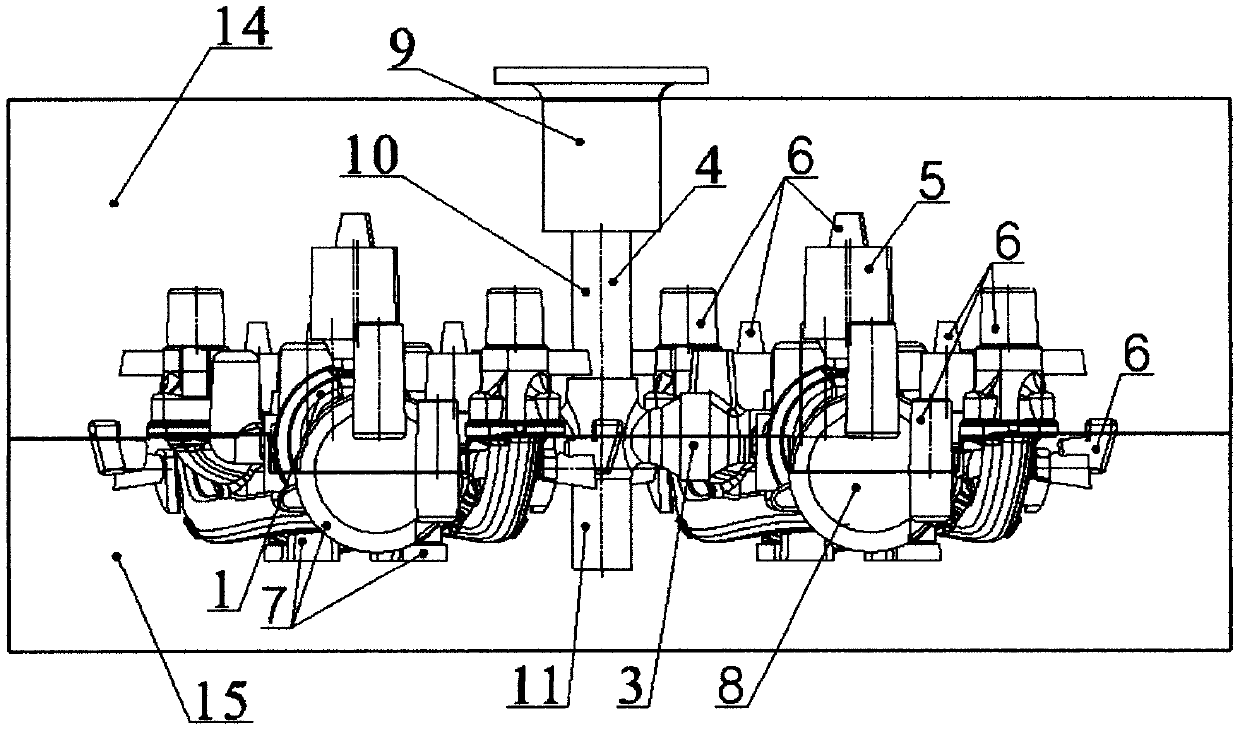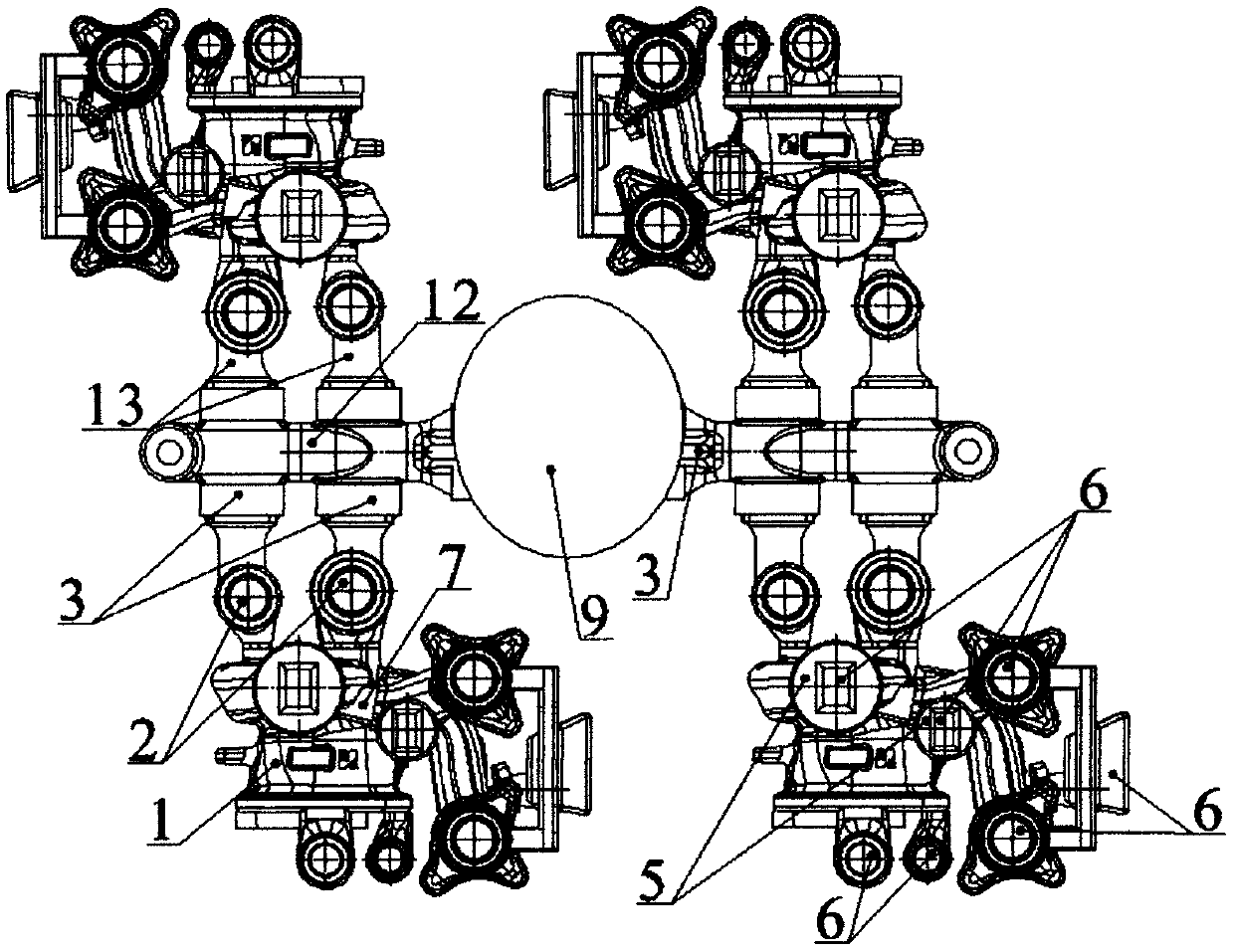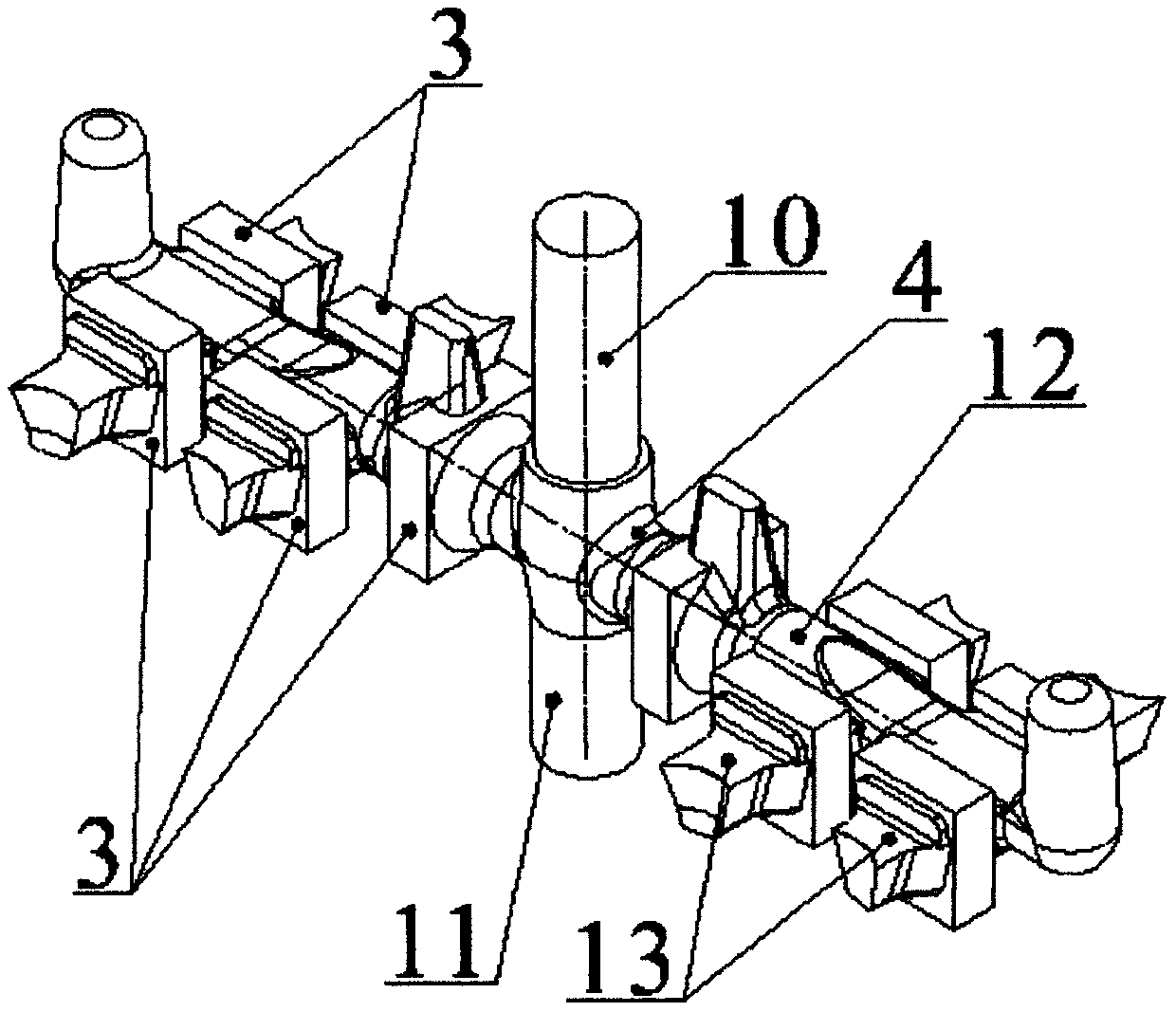Method for producing turbocharger shell for wet-type casting vehicle
A turbocharger shell and vehicle turbine technology, which is applied to casting molding equipment, casting molds, cores, etc., can solve the problems of low production efficiency, high design requirements, low pass rate, etc., and achieve production cost reduction, The filling process is stable and the effect of simplifying the production process
- Summary
- Abstract
- Description
- Claims
- Application Information
AI Technical Summary
Problems solved by technology
Method used
Image
Examples
Embodiment 1
[0041] The traditional green mold sand is used for molding, and two boxes of molding technology are used, with four pieces in one box, arranged symmetrically in the center. There is a sprue 10 connecting the upper sand box and the lower sand box in the middle of the sand mold; a runner 10 is set at the bottom of the sprue 10; a special sprue nest with a rectangular longitudinal section is set at the end of the sprue 10 11; An inner sprue is provided at the far end of the runner. Wherein, each volute casting 1 communicates with the volute casting 1 through two inrunners. During the molding process, the composition ratio of green mold sand used is calculated by weight percentage: new sand 70%, old sand 26.8%, moisture 2.6%, component A 0.6%, component B 0%. Among them, component A is 53% natural sodium base + 20% artificial sodium base + 27% coal powder, and component B is 30% artificial sodium base + 70% coal powder.
[0042] In order to ensure the stability of mold filling u...
Embodiment 2
[0049] In the modeling, the traditional green mold sand is used for modeling. Two-box modeling technology is adopted, four pieces in one box, arranged symmetrically in the center. Set a sprue 10 connecting the upper sand box and the lower sand box in the middle of the sand mold; set a runner 10 at the bottom of the sprue 10; set a special sprue nest 11 with a rectangular longitudinal section shape at the end of the sprue 10; An inrunner is provided at the far end of the runner.
PUM
 Login to View More
Login to View More Abstract
Description
Claims
Application Information
 Login to View More
Login to View More - R&D
- Intellectual Property
- Life Sciences
- Materials
- Tech Scout
- Unparalleled Data Quality
- Higher Quality Content
- 60% Fewer Hallucinations
Browse by: Latest US Patents, China's latest patents, Technical Efficacy Thesaurus, Application Domain, Technology Topic, Popular Technical Reports.
© 2025 PatSnap. All rights reserved.Legal|Privacy policy|Modern Slavery Act Transparency Statement|Sitemap|About US| Contact US: help@patsnap.com



